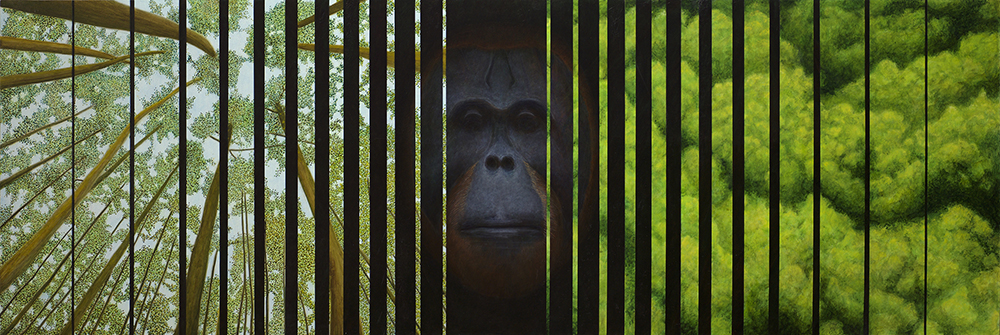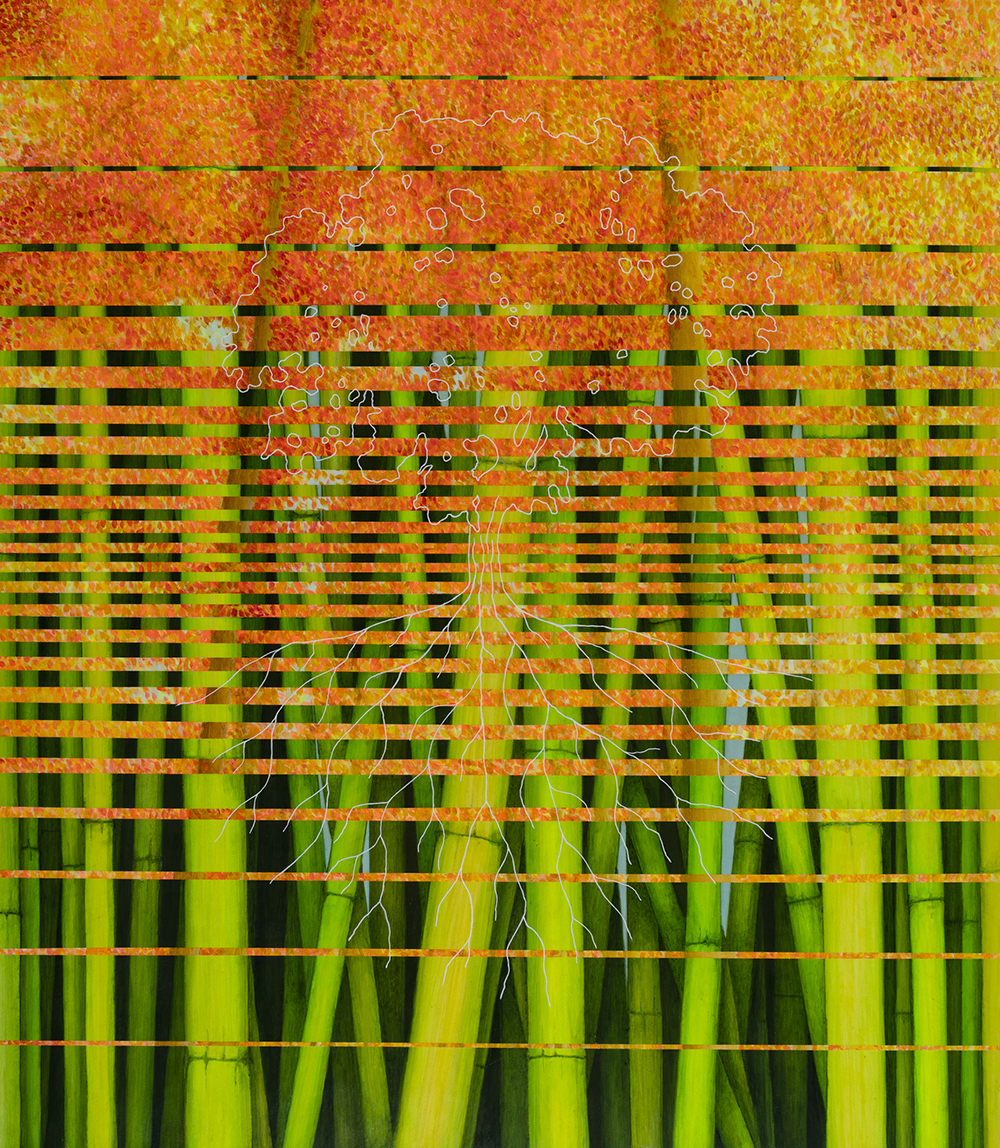Bryan Ida’s recent paintings of nature and its animal inhabitants examine the perilous plight of both in the face of increasing threats to the planet. With forests continuing to be torn down by industrial enterprises and climates becoming increasingly erratic, the natural order of the material world is in serious jeopardy—as is the existence of many of the creatures who live among trees and in oceans. To represent this reality, Ida developed a process whereby he splices together two discordant views of nature. He begins by painting one composition, then divides it into linear sections using tape and superimposes different painted imagery over it. Finally, he peels off the tape to expose conflicting fragments of two nature scenes.
Nature’s Way (2020), an early work in his series, focuses entirely on trees and foliage, illustrating emerging tensions by contrasting the terse yellow-green palette of a dense bamboo forest and the harsh acidic oranges of horizontal bands of leaves that simulate Venetian blinds. In 2021, Ida began incorporating endangered species into the scenarios; for example, he juxtaposed animals trapped in a field of darkness with scenes of their natural habitat. In Orangutan (2021), the tropical rainforest ape stares straight at the viewer, flanked at left by trees with the sky seen from below and at right by treetops viewed from above. With dark vertical lines closing in from both directions, it seems as if the animal stands at the precipice between the physical and the spiritual, the temporal and the timeless.

Bryan Ida, Orangutan, 2021, acrylic on panel, 24 x 72 in., Courtesy of Billis Williams Gallery.
In late 2021, Ida damaged a nerve in his right arm, which caused the right-handed artist to cease painting for several months. Resilient as ever, he eventually turned to making smaller, less detailed paintings, using his left hand. Remarkably, we would never know this if Ida had not disclosed it—the works in his “Faded Light” series are meticulous in execution, not to mention poignant in tone. In each of these predominantly monochromatic paintings, a sole animal from the endangered species list searches for a way out of a dark atmospheric field painted in shades of blue, green, red or gray. Subtle gradations move incrementally from a bleak darkness to a hopeful light, or vice versa.
Red Panda and Snow Leopard (both 2022) are particularly endearing, the subjects peering out at us from the lower regions of their depicted spaces as if pleading for help, with the crisp tactility of their coats compelling us to pet them. By contrast, the protagonists of Siamese Crocodile (2022) and Asian Elephant (2023) confidently approach the viewer, the former displaying fierce anger, and the latter appearing strong and triumphant. Such an air of determination to survive is also seen in Monarch Butterfly (2022) and Palos Verdes Blue (2023), in which the delicate insects appear to have no hesitancy about spreading their wings and flying toward the light. Through the cautious optimism expressed in these paintings, Ida reminds us of the efficacy of willpower, and that we should not give up hope for the future of our planet.

